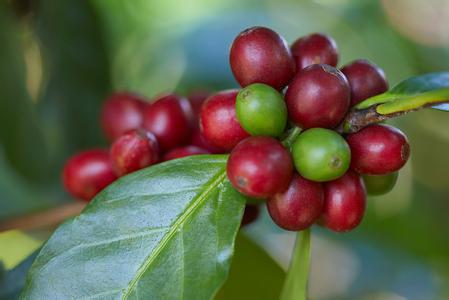Nicaragua Coffee Bean Characteristics Flavor Description Taste Treatment Grind Scale Region
Description of characteristic flavor of Nicaraguan coffee beans taste treatment grinding scale production area
High-quality Nicaraguan beans, such as Maragogipe, a very large coffee bean called elephant beans, are highly valued. This coffee has a well-balanced taste, without the distinct acidity that other Central American coffees often have, but it has a clear taste and excellent aroma. This round and soft texture also makes it a standout in the more moderate evaluation of Guatemalan coffee, and is loved by many people.
Acidity (brightness) (1-10): 8.9
Taste (layered) (1-10): 8.8
Palate (alcohol thickness) (1-5): 3.4
Aftertaste (residue) (1-10): 8.9
Balance (1-5): 2
Basic score (50): 50
High-quality Nicaraguan coffee, grown in the north and middle of the country. Coffee is a pillar industry in Nicaragua, producing nearly 100,000 tons of coffee beans every year. Many people who have tasted Nicaraguan coffee usually think that it is no different from Salvadoran coffee or Honduran coffee. It has a rich aroma, smooth and delicate, and a slightly bitter finish, like a faint taste in wine.
Nicaragua of Nicaragua is known as "the country of volcanic lakes" because of its many lakes and volcanoes. The volcanic soil rich in minerals produces high-quality coffee beans. The most famous coffee produced by volcanic ash soil is Kona kona, Hawaii.
Madriz is an ecological coffee with a very hard shell. In the pure natural planting environment, it uses more complex operations to maintain the delicate aroma and taste of the coffee; it is produced in northern Nicaragua between Matagalpa and Jinotega, with an average annual rainfall of 1500-1700mm and a temperature of 20-29 degrees Celsius. All of them choose coffee manually, and the cost of labor and time alone is much higher than that of ordinary beans.

Important Notice :
前街咖啡 FrontStreet Coffee has moved to new addredd:
FrontStreet Coffee Address: 315,Donghua East Road,GuangZhou
Tel:020 38364473
- Prev

Brewing method for describing the taste and flavor of Yejiaxuefei coffee
Yega Chuefei Coffee characteristic taste flavor description of the soaking method: the sun is a little complex, light fermented wine, bitter taste will be more intense, the taste will be much more rich, honey sweet, cocoa rhyme with a touch of spice, body thick and lasting. [wash Yejia Xuefei]: it is recommended to use 15 grams of powder at 92 degrees water temperature, water powder ratio 1 15 minute V60 filter cup, water powder ratio 1:15, first.
- Next

Characteristics and flavor description of Panamanian butterfly coffee beans taste grinding scale production area
The characteristics and flavor of Panamanian butterfly coffee beans describe the taste grinding scale producing area of Pokuit, in which there are many excellent manors, except the famous Emerald Manor, Alida Manor, Aqaba Manor and so on. all produce high-quality boutique coffee. And this is not only due to the superior ecological conditions of the Pokuit region of Panama and the Baru volcano.
Related
- Detailed explanation of Jadeite planting Land in Panamanian Jadeite Manor introduction to the grading system of Jadeite competitive bidding, Red bid, Green bid and Rose Summer
- Story of Coffee planting in Brenka region of Costa Rica Stonehenge Manor anaerobic heavy honey treatment of flavor mouth
- What's on the barrel of Blue Mountain Coffee beans?
- Can American coffee also pull flowers? How to use hot American style to pull out a good-looking pattern?
- Can you make a cold extract with coffee beans? What is the right proportion for cold-extracted coffee formula?
- Indonesian PWN Gold Mandrine Coffee Origin Features Flavor How to Chong? Mandolin coffee is American.
- A brief introduction to the flavor characteristics of Brazilian yellow bourbon coffee beans
- What is the effect of different water quality on the flavor of cold-extracted coffee? What kind of water is best for brewing coffee?
- Why do you think of Rose Summer whenever you mention Panamanian coffee?
- Introduction to the characteristics of authentic blue mountain coffee bean producing areas? What is the CIB Coffee Authority in Jamaica?

